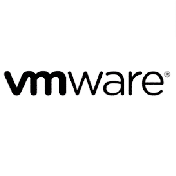Seminarinhalt
Discussion activities include: The POR, IPL process, JES implementation and operating environment, VTAM environment for TSO, ISPF, SNA and TCP/IP networking, RACF, ISPF/PDF and UNIX System Services. It defines the classic approach to data management in a z/OS system. It identifies various software products and utilities used to define, maintain, and manage catalogs and data sets in the z/OS environment. It also discusses Parmlib usage and requirements for system initialization and operation that include: System symbolics, WLM, SFM, RMF and system logger. Both single system and multi-system sysplex usage is identified. z/OS install, upgrade options, maintenance using SMP/E and I/O configuration requirements using HCD is listed and described.
Objective
- Describe the basics of z/OS architecture
- Identify basic components of a z/OS system
- Discuss what you have learned about LPARs
- Describe maintenance principles
- Identify and list the POR process
- Describe the IPL process
- Identify the basic address spaces
- Describe how to shut down z/OS
- Implement a basic JES2 batch environment
- Identify how work can be started in z/OS and it's relationship to the job entry subsystem
- Describe how JES2 prepares and executes work in z/OS
- Explain JES2 start options
- Describe JES2 parameters that can be customized to support z/OS batch
- Identify how communications and control of JES2 can be done using the operator commands and SDSF
- Describe JES3 configuration and job processing phases
- Identify JES3 start options
- Describe the two networking schemes in the z/OS environment: SNA and IP
- Identify SNA networking resources
- Explain how SNA sessions are established
- Describe the role of TCP/IP as a physical filesystem in UNIX System Services
- Implement and start a local VTAM instance to provide the base for SNA applications such as TSO
- Implement and start TSO
- Start a TCPIP stack and check accompanying messages
- Identify the main functions of Security Server (RACF) and the role it plays in controlling user access to the system
- Describe the contents of RACF user, group, and resource profiles
- Describe how RACF profiles are used to authorize user access to a data set resource
- Identify two key members used for TCAS startup
- Name the components of ISPF
- Describe the general layout of ISPF/PDF panels
- Describe how UNIX System Services are used in z/OS
- Describe briefly the UNIX Shell and utilities and how they are accessed
- Describe the application services provided in UNIX System Services
- Describe how security is handled in UNIX System Services
- Describe the classical z/OS data management
- DASD init: VTOC, VTOC index
- ICF catalog creation: BCS, VVDS
- MCAT/UCAT
- IDCAMS utility
- DFSMS: DFSMSdss, DFSMShsm
- Data, storage, and management classes
- Define the hierarchical data management
- HFS file system
- zFS file system
- Define load-parameters for IPL
- Define symbols for use in system initialization
- Define a configuration for system initialization
- Define a library for procedures
- Identify the sysplex resources required to run WLM
- List the main components that comprise a WLM service definition for a system/sysplex
- Describe the function of WLM service definition parameters such as workloads, service goals, periods, and WLM subsystems
- Describe how SMF data set are created and used
- Explain SMF record types and how they are used
- Identify the three RMF monitor types
- Describe how the RMF monitor is used for reporting purposes
- Identify System Logger components and usage for:
- Sysplex configuration and CF logstreams
- Single system and DASD-only logstreams
- Describe SMF usage of logstreams
- Describe the differences between IOCDS and IODF
- Identify and list the HCD definition process sequence
- Describe how the HCD dialogs are used to define a configuration
- Discuss the purpose of Hardware Configuration Manager
- Describe the overall concept of SMP/E: Global, target and DLIB zones
- Describe what elements and SYSMODs are
- Create an SMP/E working environment
- Identify the batch and ISPF interfaces to SMP/E
- Install a user function using RECEIVE, APPLY, and ACCEPT
- Explain how to remove a SYSMOD with RESTORE
- Describe the installation options available to install z/OS
- Use the attributes of z/OS elements and features to identify the contents of a z/OS product
- Describe the contents of the ServerPac offering and important install documentation sources
- List the main steps in the ServerPac build process
- Describe hardware and software prerequisites for performing a ServerPac installation in:
- The driving system
- The target system
Programm
- Welcome
- Unit 1 - What makes up a z/OS system?
- Exercise 1- Introduction to z/OS setup
- Unit 2 - System boot: POR and IPL
- Exercise 2 - Complete the IPL: Start JES, start networking
- Unit 3 - Processing user work with z/OS
- Exercise 3 - LOGON into TSO and create a new user profile
- Unit 4 - Networking, z/OS communication server
- Exercise 4 - Data administration
- Unit 5 - What else is needed for end user access to the system?
- Exercise 5 - Automate startup and monitor the system
Day 3
- Unit 6 - Data management
- Exercise 6 - System logger
- Unit 7 - A closer look at IPL: IPLPARM, SYS1.PARMLIB, SYS1.PROCLIB
- Exercise 7- Define a string of DASD and ACTIVATE dynamically
- Day 4
- Unit 8 - System management: WLM, SMF, RMF, and system logger
- Exercise 8 - Install and maintain a user function
- Unit 9 - Hardware configuration definition
- Unit 10 - Software maintenance: SMP/E
- Unit 11 - Change management: ServerPac and other IBM services




